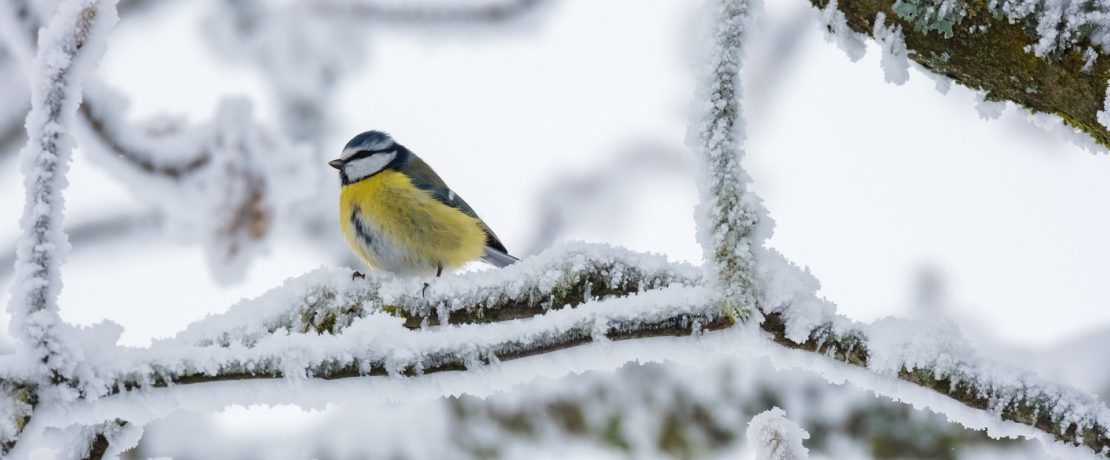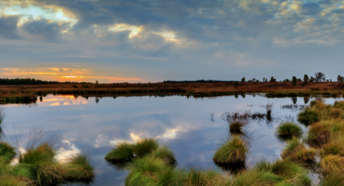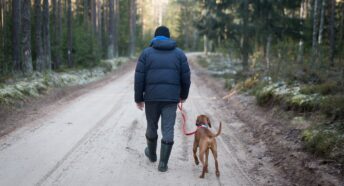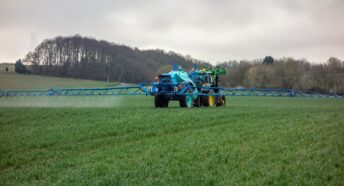Did you know… small birds only have enough fat for one winter’s night?
It’s not only us humans who struggle when the weather turns colder in the winter. The long winter nights have a huge effect on birds, especially smaller birds that have to balance what they are eating for energy with the amount of extra fat they have to carry whilst flying. Research has shown that small birds like the Blue Tit can be around 5% lighter when dawn comes. It isn’t surprising that smaller birds have to spend so much time foraging for food and why your garden feeders are so important for wildlife this winter.
It makes sense that during the longer and colder nights of winter, birds expend more energy keeping warm and lose more weight overnight than during the milder months. During winter the nights are particularly long and this also makes a difference to how smaller birds can keep warm when roosting in temperatures below zero.
A Blue Tit like the one pictured above needs 1kcal per gram of body weight each day during winter and would spend 85% of the daylight hours searching for food to replenish energy before dusk. There are many birds that don’t migrate in winter and they all need support when the temperatures are as low as they have been in recent weeks. The RSPB recently shared some useful advice to help the birds on your doorstep.
Tips for feeding birds this winter
What to feed: Calorie-rich foods are best for our feathered friends such as mixed seed, sunflower seed, nyjer seed and good quality peanuts. You can even try making your own bird cakes or fat balls which are an excellent source of fat. Here’s some important advice for what to feed birds. If you aren’t able to buy or make food for the birds then kitchen scraps like mild grated cheese, bruised fruit, cooked rice, unsalted bits of hard fat, roast potatoes and dry porridge are just fine!
Importance of water: In freezing temperatures it can be harder to find sources of water and birds use fresh water for drinking and bathing all year round. If you have a bird bath or bowl of water in your garden then defrost it with warm water and be sure to keep it topped up with fresh water. Cleaning the water and feeders is also really important to reduce the spread of diseases. The RSPB recommends discarding unused food and cleaning weekly with washing up liquid.
Provide shelter too: As well as feeding birds to keep their energy levels up it’s helpful to provide shelter from the freezing temperatures overnight in winter. Dense hedges such as privet or hawthorn are ideal places for roosting. If you have ivy or holly these also provide shelter from the elements. Nestboxes are the best way to support birds in your area as some species will even cosy up together for communal warmth. According to the RSPB, the record number of birds found in one box is 63 wrens!
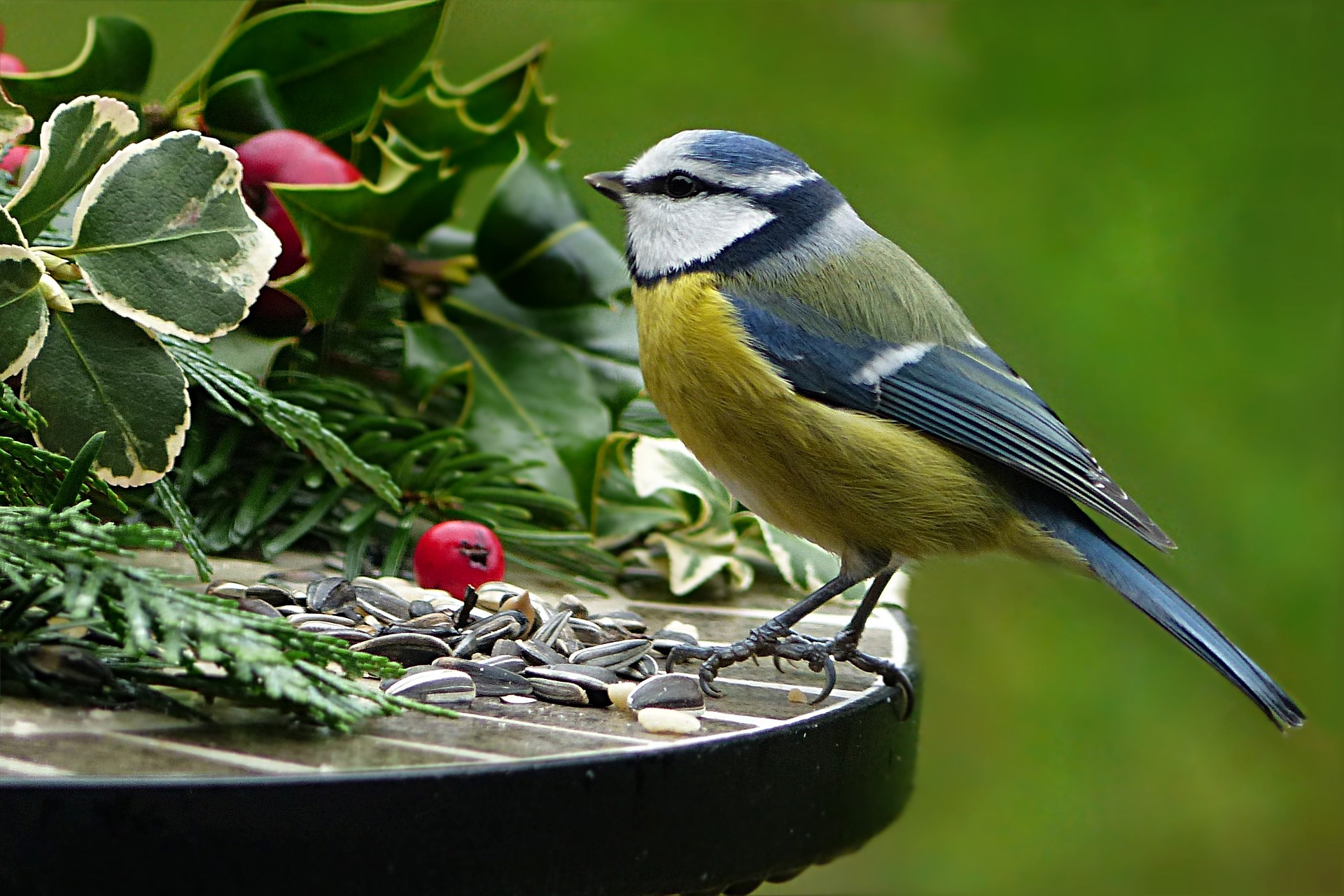
Do birds feel the cold?
Birds use their many layers of feathers to trap warm air and increase body heat. When you see them in the garden or out and about on a winter’s walk you might feel sorry for their little cold feet. Thankfully most birds don’t suffer from cold feet as their legs are mostly tendons and bones instead of the higher levels of muscle and nerve tissue found in our legs. Birds actually have a countercurrent blood flow in their legs and feet because the blood vessels going to and from the feet are close together. This means the blood flowing back to the body is warmed by blood flowing down to the feet and their circulation is much faster than a human’s, which stops their feet from freezing. However, the cold is dangerous for UK wild birds and garden bird counts regularly show that numbers can plummet by 50% or more during particularly cold winters.
In fact, the RSPB has been urging wildlife lovers to give a lifeline to frosty feathered friends during the recent cold snap. The winter temperatures we have been seeing have brought more birds to gardens and local greenspaces in search of food. As natural food supplies such as berries start to run low, there’s never been a more important time to stock your bird feeders and tables to help out. Use the tips above and visit their website for a variety of ways you can help.
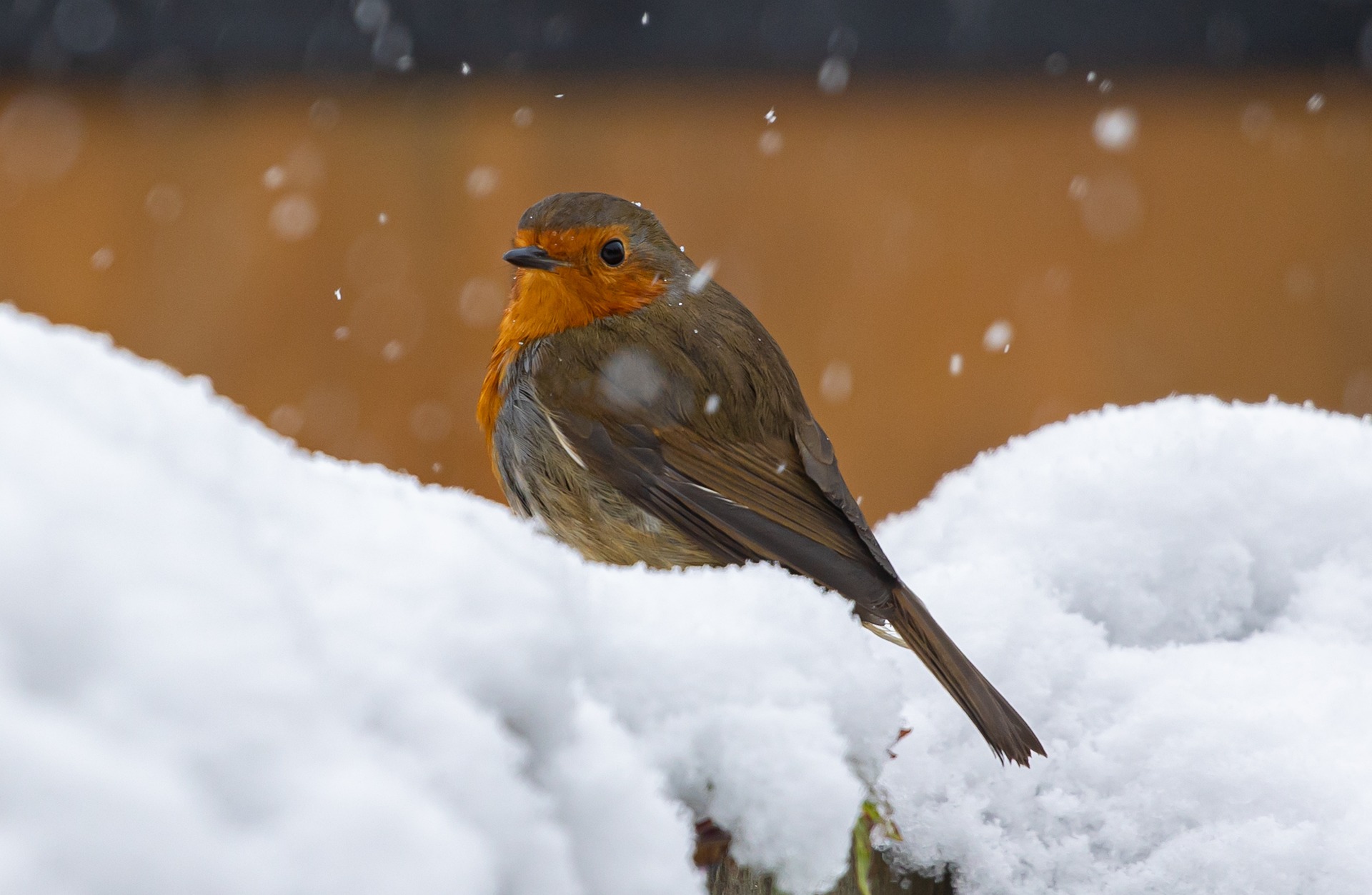
Robins, the quintessential winter bird
Despite being able to see robins hopping around your garden at any time of year, our red-breasted friends have become synonymous with Christmas time. There are a few different stories as to how they became so associated with Christmas but a common one originates from Victorian times. This was when sending Christmas cards first became popular and the Royal Mail postmen who delivered them earned the nickname “robin redbreast” thanks to their bright red uniforms.
We also find that there are more robins around at this time of year as they migrate from colder areas like Russia, Scandinavia, and parts of Europe. There is something so delightful about these cute little birds, which are known to be less wary of humans than some other species.
Some Robins do migrate across the Channel to find higher temperatures in mainland Europe but the ones that stay in the UK are more active and visible. This is because they can start breeding as early as January if it is a mild one. They are also one of the few species of wild birds that keeps singing right on through the frosty weather – partly because they are so territorial!
We hope this information will help you support the wild birds in your local green spaces and gardens. We all have a part to play in keeping our wildlife and their habitats thriving for the next generation. If you are interested in helping us protect and celebrate the Surrey Countryside you can discover how to get involved here.
